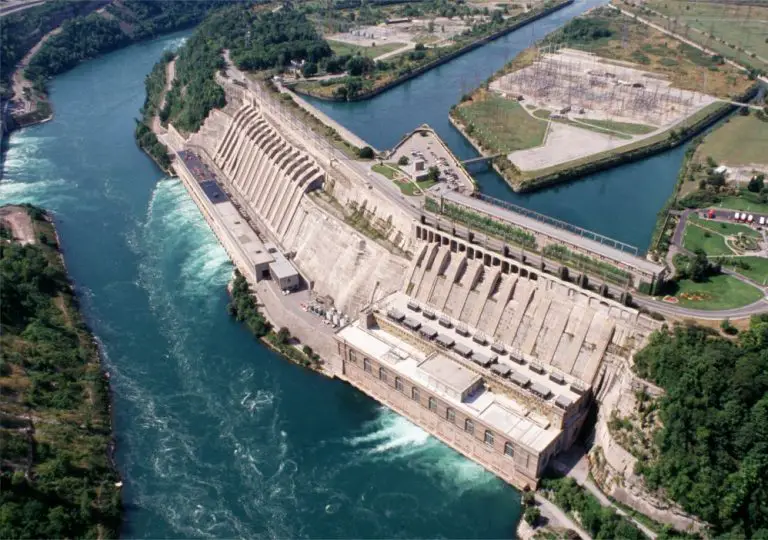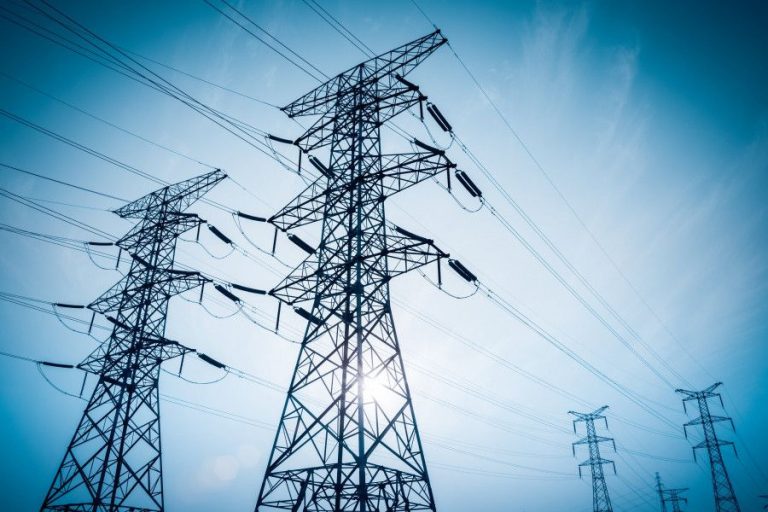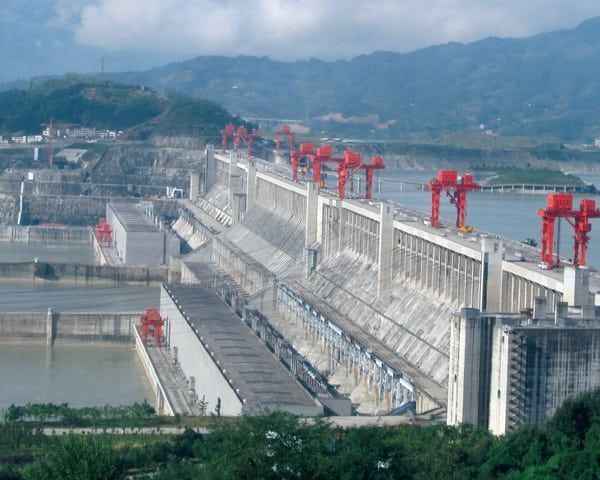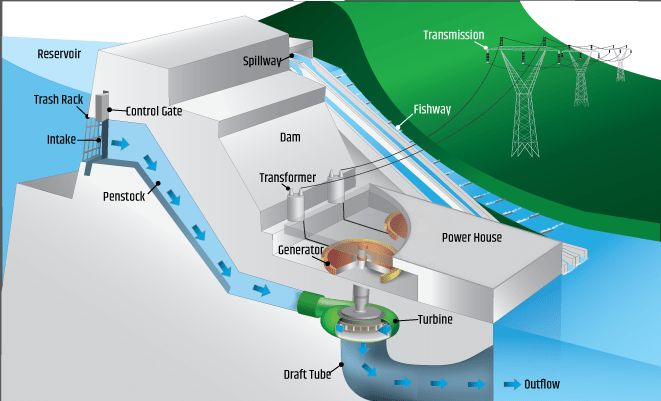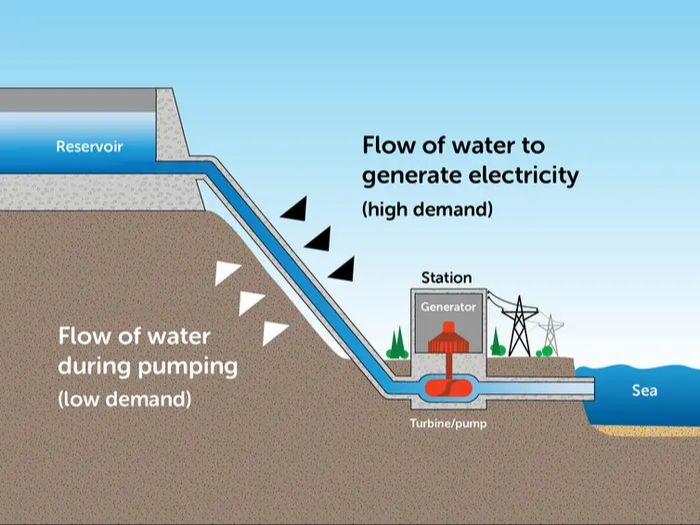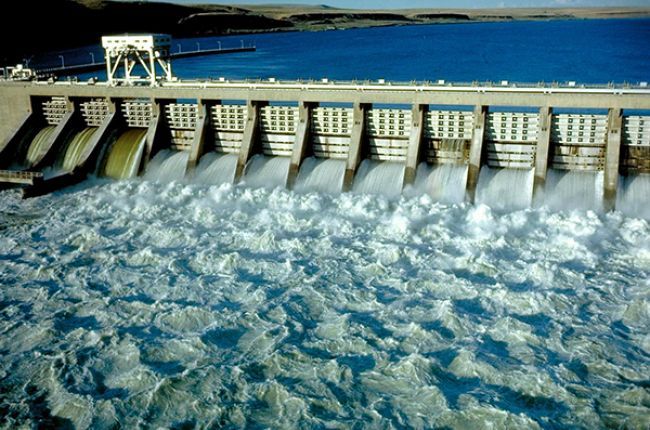What Equipment Is Needed For Hydroelectric Power?
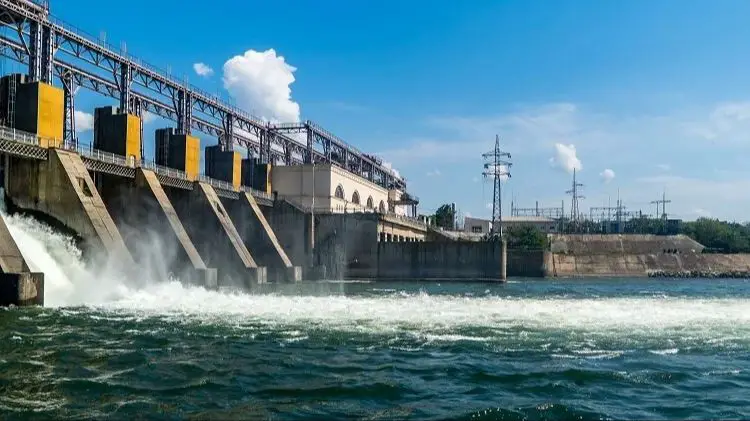
Hydroelectric power is a renewable energy source that generates electricity by using the natural flow of water. The history of hydroelectric power dates back thousands of years, with evidence of ancient watermills used for mechanical power. However, the first hydroelectric power plants capable of generating electricity were developed in the late 19th century.
Today, hydroelectric power provides about 16% of the world’s electricity and over 63% of renewable energy generation globally. It offers a clean, domestic energy source that supports grid reliability and helps avoid greenhouse gas emissions. Hydroelectric dams also provide other benefits like flood control, irrigation, and recreation.
To generate hydroelectricity, the potential energy from falling or fast-moving water must be converted into electricity. This requires civil infrastructure like dams as well as electrical equipment like turbines, generators, and transformers. Understanding the main components involved helps explain how hydroelectric plants are designed and operated.
Dams
Dams are a crucial component of hydroelectric power plants. They serve the purpose of controlling and storing water in a reservoir, providing the water supply needed to generate electricity. There are several types of dams used for hydroelectric projects:
Concrete gravity dams rely on their immense weight and strength to resist the force of the water pushing against them. They are usually built in a triangular cross-section from concrete.
Embankment dams are made from compacted earth, rock, or tailings. The earthen material provides the mass and stability to hold back the reservoir. An impervious membrane is added on the side facing the water.
Arch dams are curved dams constructed from concrete that transfer water pressure into the abutments. They require sturdy valley walls to brace against.
Source: Discover the cost of building a hydroelectric power plant and …
Dams have to be custom designed and engineered based on the specific geography, topography, hydrology, and geology of the site. Advanced construction materials like roller compacted concrete and asphalt core dams are sometimes used. Building a dam requires extensive excavation, hauling, compacting, and pouring massive amounts of material.
Turbines
The turbine is a critical component of hydroelectric power systems. It converts the energy of flowing water into mechanical energy to drive an electrical generator. There are two main types of hydroelectric turbines: impulse and reaction.
Impulse turbines, like Pelton wheels, use the velocity of water to move the runner and shaft. Water jets hit spoon-shaped buckets along the wheel’s rim, changing the water’s direction and imparting force on the turbine. Impulse turbines are useful for high head sites with significant elevation drop. 1
Reaction turbines like Francis and Kaplan turbines operate using water pressure. The runner is fully immersed in water flowing through it. The pressure difference across the turbine blades causes them to move. Reaction turbines work well for low head sites with less elevation drop but higher flow volumes. 2
Turbine sizes range from small systems under 500 kW for isolated communities, to massive units over 1000 MW for major dams. Key materials are stainless steel, cast iron, and forged steel for longevity and resilience. Proper turbine selection and sizing is crucial for optimal efficiency and power output.
Generators
The generator is the core component that converts the mechanical energy from the spinning turbine into electrical energy. Inside the generator housing, a rotor spins inside a stator. The rotor connects to the turbine shaft and spins when the water hits the turbine blades. Copper wire coils around the rotor interact with magnets on the stator to induce a magnetic field and generate electricity, following Faraday’s law of electromagnetic induction. As the rotor spins rapidly inside the stator, it continually changes the magnetic field through the wire coils, inducing voltage and generating an alternating current (AC).
The key components of a hydroelectric generator include:
- Rotor – The spinning component attached to the turbine shaft that rotates through the magnetic field.
- Stator – The stationary component that surrounds the rotor. It contains magnets that induce a magnetic field in the coils.
- Exciter – Provides DC current to the rotor to energize the magnetic field.
- Cooling system – Cools the generator to prevent overheating.
- Lubrication system – Provides lubricant to minimize friction.
The rotational speed of the turbine determines the frequency of the electricity generated. In the United States, generators spin at 60 cycles per second to produce standard 60 Hz AC current. The generator’s power output capacity depends on its size and design. Large hydroelectric plants can have enormous generators producing hundreds of megawatts of power. The generated electricity flows through transformers, which step up the voltage for transmission over long distances.
Source: https://www.usgs.gov/special-topics/water-science-school/science/hydroelectric-power-how-it-works
Transformers
Transformers play a critical role in hydroelectric power plants by stepping up the voltage of the electricity generated so that it can be efficiently transmitted over long distances. As explained by Corefficients, “The electrical transformer converts the alternating current that the hydroelectric power is generating into a high voltage current. This allows the current to be transmitted with limited power losses across the transmission lines to homes and businesses” (https://corefficientsrl.com/electrical-transformers-assist-hydroelectric-energy/).
The most common type of transformer used in hydro plants is the step-up transformer. These increase, or step up, the relatively low voltage electricity produced by the generator to the high voltages – such as 138,000 volts – needed for economical transmission over long distances. Step-up transformers operate on the principle of magnetic induction between coils to transform voltage levels. Construction consists of two electrically isolated coils – the primary low voltage coil and secondary high voltage coil – wrapped around a magnetic core made of laminated steel.
By stepping up the voltage, the electric current can be transmitted with lower losses through the power lines that carry it to substations. As Lehigh University explains, “The electricity goes to the transformer in the powerhouse. The transformer steps up the voltage of the electricity so it may travel through the power lines with less loss of power” (https://ei.lehigh.edu/learners/energy/hydroelectric3.html). Transformers are therefore essential components enabling hydro plants to deliver electricity efficiently over long distances.
Transmission Lines
After the electricity is generated, it needs to be carried to substations and distributed to where the power is needed. Hydroelectric power stations generally use overhead transmission lines to transmit the electricity (Source: https://www.shutterstock.com/search/hydroelectric-transmission-lines). These transmission lines are usually made of aluminum conductor steel reinforced (ACSR) cables suspended on steel towers via insulators. The cables contain steel strands surrounded by aluminum wires which efficiently carry the electricity. The steel provides strength to support the weight of the wires while the aluminum allows for better conductivity.
Constructing transmission lines often involves erecting steel towers and stringing the ACSR cables between them. The towers are usually 50-100 feet tall and spaced hundreds of feet apart depending on the terrain. The number of cables on each tower can vary based on the amount of power being transmitted. The lines themselves need to be situated and constructed to withstand weather events like wind, ice, etc. Proper clearances above ground need to be maintained to prevent hazards. Routine inspection and maintenance is necessary to ensure reliable operation (Source: https://www.encyclopedia.com/environment/encyclopedias-almanacs-transcripts-and-maps/transmission-lines).
Substations
Substations are an important part of hydroelectric power generation as they take the electricity from the power station and transform the voltage so it can be transmitted efficiently. They also distribute the electricity to the end users and connect different transmission lines.
The main equipment found in hydroelectric substations includes transformers, circuit breakers, disconnect switches, protective relays and monitoring systems.
Transformers step up the voltage from the generators to the proper transmission level, which is usually 138 kV or higher. This allows the electricity to be transmitted efficiently over long distances with lower losses. Transformers also step down the voltage for distribution. Circuit breakers and protective relays help isolate faults and problems in the system.
Monitoring systems in substations provide control, protection, metering and communication functions. Operators can monitor and control the substation remotely. Substations also contain switchyards with insulators and switches that allow different lines and equipment to be connected as needed.
Proper maintenance of substation equipment is crucial to ensure reliability of the hydroelectric system. This includes inspections, testing, repairs and replacements as needed over the lifespan of the substation.
Switchyard
The switchyard is a key component of a hydroelectric power plant’s electrical infrastructure. It serves as the connection point between the power station and the transmission grid (Illustrated Glossary – Substations | Occupational Safety and …). The main purpose of the switchyard is to house equipment for switching, transforming, and transmitting the electricity generated by the plant.
The switchyard is configured with busbars, which are copper or aluminum bars that act as junction points to connect the different equipment. Power from the generators flows through circuit breakers into the busbars. Transformers in the switchyard step up the voltage for more efficient transmission over long distances. Disconnect switches allow equipment to be isolated for maintenance. Other switchyard equipment includes lightning arrestors, capacitor banks, and instrument transformers for monitoring and protection (Electrical Substation Components and Their Workings).
The switchyard connects the hydro plant to transmission lines that carry the electricity to substations for distribution. Careful design and grounding of the switchyard is critical for safe, reliable operation of the hydroelectric power system.
Monitoring Systems
Hydroelectric plants utilize extensive monitoring systems to track the performance and status of the equipment. These include various sensors and automation systems.
Key sensors monitor factors like water pressure, turbine speed, vibration, temperature, and power output. These sensors feed data back to the control center to help operators understand what is happening throughout the plant in real time. Fiber optic sensors may be used due to their durability in wet environments.
The control and automation system acts as the central nervous system of the plant. It analyzes sensor data and allows operators to control equipment remotely from a central control room. The automation system can track performance metrics, detect issues, and take automatic actions to optimize operations or trigger warnings. Modern plants increasingly use programmable logic controllers (PLCs) and industrial control systems (ICS).
Monitoring system data also helps scheduled preventative maintenance to avoid costly unplanned downtime. Regular analysis of vibration, temperature, and other sensors can reveal signs of impending equipment failure before it occurs. Operators can then take proactive steps to address worn parts and avoid catastrophic failures. Sophisticated software models can even predict failures before monitors detect an issue.
Overall, the extensive monitoring and automation systems at hydroelectric plants allow safer, more efficient, and more reliable operations. The data provides insight for continual optimization as well as strategic capital planning.
Maintenance
Hydroelectric plants require regular maintenance and inspections to ensure efficient and safe operation. Maintenance programs follow schedules to check critical components and perform necessary repairs or upgrades.
Turbines, generators, transformers, and other electrical equipment undergo routine maintenance on schedules recommended by manufacturers, usually every 6-12 months. This involves inspecting, testing, cleaning, lubricating, and replacing worn parts if needed. Specialized crews inspect underwater components of dams and intakes. Dam safety inspections occur on regular cycles to check for issues like cracks, erosion, or sediment buildup.
Predictive maintenance uses monitoring systems to track equipment condition and performance. Data analytics identify problems early so maintenance can occur before failure. Examples are vibration analysis on turbines or dissolved gas analysis on transformers. Monitoring water flow and reservoir levels also helps plan maintenance during low water periods.
Major overhauls or upgrades may occur every 5-10 years. This involves disassembling and rebuilding turbines, replacing obsolete equipment, or installing retrofits to improve efficiency or capacity. Refurbishment keeps plants operating reliably for decades past original life estimates.

